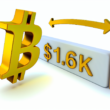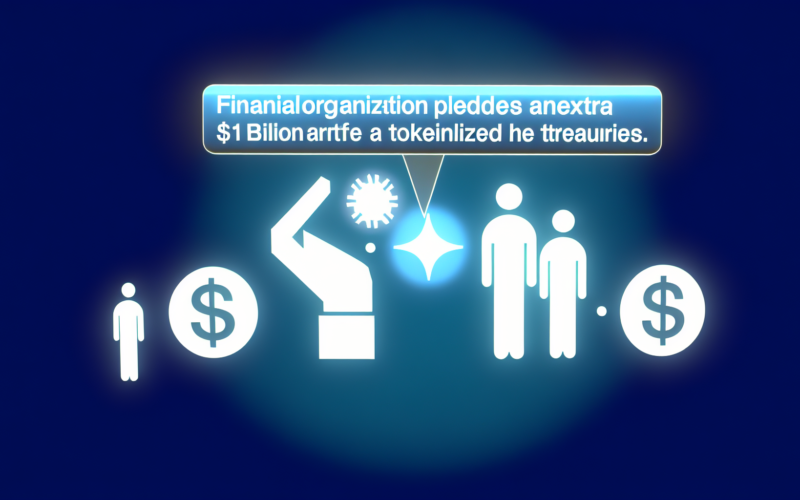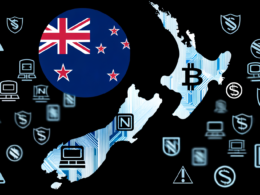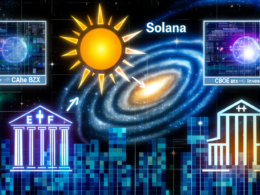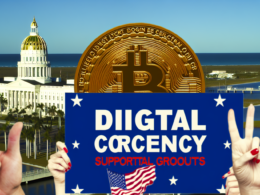Spark allocates an additional $1B to tokenized U.S. Treasuries, leading the market with $2.4B in assets! 🚀 #DeFi #Blockchain #Investments
- Exploring Spark’s $1 Billion Commitment to Tokenized Treasuries: What You Need to Know Today
- From Concept to Reality: The Evolution of Tokenized Treasuries
- Main Insights on Spark’s Tokenized Treasuries Initiative
- The Roadblocks to Tokenized Treasury Adoption in Emerging Markets
- What Lies Ahead for Tokenized Treasuries: Emerging Trends and Predictions
- Lessons from Spark’s Tokenized Treasuries Initiative: What We’ve Learned
Exploring Spark’s $1 Billion Commitment to Tokenized Treasuries: What You Need to Know Today
In a significant move that underscores the growing intersection of traditional finance and decentralized technologies, Spark, an on-chain capital allocator, has announced a substantial commitment to the tokenized treasuries sector. By allocating an additional $1 billion to tokenized U.S. Treasuries, Spark has effectively increased its total deployment to a staggering $2.4 billion across three funds. This decision not only highlights Spark’s leadership in the tokenized real-world assets (RWAs) sector but also signals a broader trend towards the integration of blockchain technology in traditional financial markets.
The significance of this investment cannot be overstated. As the world of finance undergoes rapid digital transformation, tokenized assets are becoming increasingly important. They offer a way to represent real-world assets on the blockchain, providing enhanced liquidity, transparency, and access to a broader range of investors. For Spark, this means leveraging these advantages to stabilize yields and reduce exposure to the inherent volatility of the cryptocurrency market.
In this article, we will delve into the details of Spark’s latest investment, explore the historical context of tokenized treasuries, and examine the implications for the future of decentralized finance (DeFi). We will also look at the challenges that lie ahead and offer insights into what this could mean for investors and the financial industry at large.
From Concept to Reality: The Evolution of Tokenized Treasuries
The journey of tokenized treasuries from a conceptual idea to a practical investment vehicle has been a fascinating one. Initially, the notion of tokenizing real-world assets was met with skepticism. Traditional financial institutions were wary of the technology, citing concerns over regulatory compliance, security, and market maturity. However, as blockchain technology matured, so did the prospects for tokenized assets.
Tokenized treasuries emerged as a promising solution to bridge the gap between traditional finance and the burgeoning world of decentralized finance. By representing U.S. Treasuries on the blockchain, institutions could offer a digital version of these securities that maintained the same value and yield characteristics as their traditional counterparts. This innovation provided a new level of accessibility and liquidity, allowing investors to trade these assets 24/7 and enabling fractional ownership.
The catalyst for widespread adoption came with the success of early pilot projects and the growing interest from institutional investors, particularly in regions like Asia Pacific and emerging markets. As these projects demonstrated the viability of tokenized treasuries, more financial institutions began to explore the potential of integrating them into their portfolios.
Spark’s latest investment marks a significant milestone in this evolution. By increasing its allocation to tokenized U.S. Treasuries, Spark is not only reinforcing its position as a leader in the space but also paving the way for other institutions to follow suit. This move highlights the growing confidence in the technology and its potential to transform the financial landscape.
Main Insights on Spark’s Tokenized Treasuries Initiative
How Spark Is Redefining the On-Chain Capital Allocation
Spark’s role as an on-chain capital allocator is pivotal in the integration of tokenized treasuries into the broader DeFi ecosystem. By embedding itself within the Sky ecosystem—formerly MakerDAO—Spark has positioned itself as a critical player in the movement towards decentralized finance. The platform’s ability to automate liquidity provision for stablecoins, including USDC, across various networks and protocols is a testament to its innovative approach.
The recent allocation of $1 billion follows the conclusion of Spark’s “Tokenization Grand Prix,” an initiative that awarded capital to three RWA protocols: BlackRock/Securitize’s BUIDL, Superstate’s USTB, and Centrifuge-Anemoy’s JTRSY. These protocols were selected based on their alignment with Spark’s goals of integrating low-volatility, yield-generating assets into DeFi.
Unlocking the Potential of Tokenized Treasuries: Benefits and Applications
The benefits of tokenized treasuries are manifold. They offer a way to stabilize yields in a market characterized by volatility and provide a hedge against crypto-native risks. By holding tokenized U.S. Treasuries as primary reserves, DeFi protocols can offer more predictable returns to investors while maintaining exposure to high-quality, low-risk assets.
Moreover, the tokenization of treasuries enables fractional ownership, allowing smaller investors to access these traditionally exclusive financial instruments. This democratization of investment opportunities aligns with the core principles of DeFi, which seeks to create an inclusive financial system accessible to all.
Challenges and Success Stories in Tokenized Treasury Deployment
Despite the promising potential of tokenized treasuries, several challenges remain. Regulatory compliance is a significant hurdle, as the legal framework for tokenized assets is still evolving. Ensuring security and transparency in the tokenization process is also crucial to gaining the trust of investors and regulators alike.
However, the success stories emerging from the sector provide a blueprint for overcoming these challenges. Spark’s collaboration with BlackRock/Securitize, Superstate, and Centrifuge has set a precedent for how traditional finance can seamlessly integrate with blockchain technology. These partnerships demonstrate the potential for tokenized treasuries to become a mainstream investment vehicle, offering both security and returns.
The Roadblocks to Tokenized Treasury Adoption in Emerging Markets
While tokenized treasuries hold immense promise, their adoption in emerging markets faces several obstacles. One of the primary challenges is the lack of regulatory clarity, which can deter both investors and institutions from participating in the market. Additionally, technological infrastructure in some regions may not be equipped to support the complexities of blockchain-based assets.
To address these issues, collaboration between governments, financial institutions, and technology providers is essential. By working together, these stakeholders can create a conducive environment for the growth of tokenized assets, ensuring that regulatory frameworks are robust and technology infrastructure is up to par.
Moreover, education and awareness are crucial in driving adoption. Investors and institutions need to understand the benefits and risks associated with tokenized treasuries to make informed decisions. Initiatives that focus on education and capacity-building can play a pivotal role in accelerating the acceptance of these assets in emerging markets.
What Lies Ahead for Tokenized Treasuries: Emerging Trends and Predictions
The future of tokenized treasuries looks promising, with several trends indicating continued growth and innovation in the sector. One of the most significant trends is the increasing interest from institutional investors, who are drawn to the potential for stable yields and reduced volatility.
As more institutions recognize the benefits of tokenized treasuries, we can expect to see a surge in the development of new products and services. Innovations such as automated trading platforms, enhanced security measures, and more sophisticated risk management tools will further enhance the appeal of tokenized assets.
Furthermore, as regulatory frameworks evolve, we can anticipate greater clarity and confidence in the market. This will pave the way for broader adoption and integration of tokenized treasuries into mainstream financial markets, ultimately transforming the way we perceive and interact with traditional financial instruments.
Lessons from Spark’s Tokenized Treasuries Initiative: What We’ve Learned
Spark’s commitment to tokenized treasuries offers several valuable lessons for investors and institutions alike. First and foremost, it highlights the importance of innovation and adaptability in the rapidly changing landscape of finance. By embracing new technologies and exploring novel investment strategies, institutions can stay ahead of the curve and capitalize on emerging opportunities.
Additionally, Spark’s initiative underscores the potential of collaboration between traditional finance and decentralized technologies. By leveraging the strengths of both sectors, we can create a more inclusive and resilient financial system that benefits all participants.
Finally, the success of Spark’s investment in tokenized treasuries demonstrates the viability of these assets as a mainstream investment vehicle. As more institutions follow in Spark’s footsteps, we can expect to see continued growth and development in the sector, ultimately reshaping the future of finance.
In conclusion, Spark’s pioneering efforts in the tokenized treasuries sector serve as a testament to the transformative power of blockchain technology. As the financial industry continues to evolve, initiatives like Spark’s will play a crucial role in driving innovation and fostering a more inclusive and dynamic financial ecosystem.


